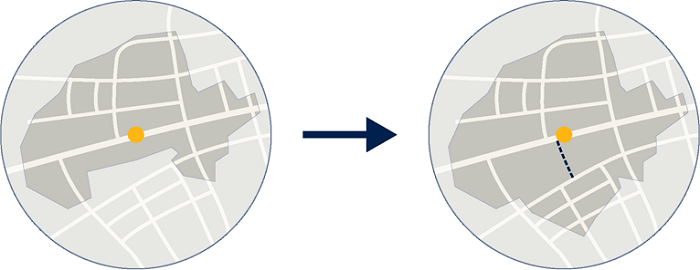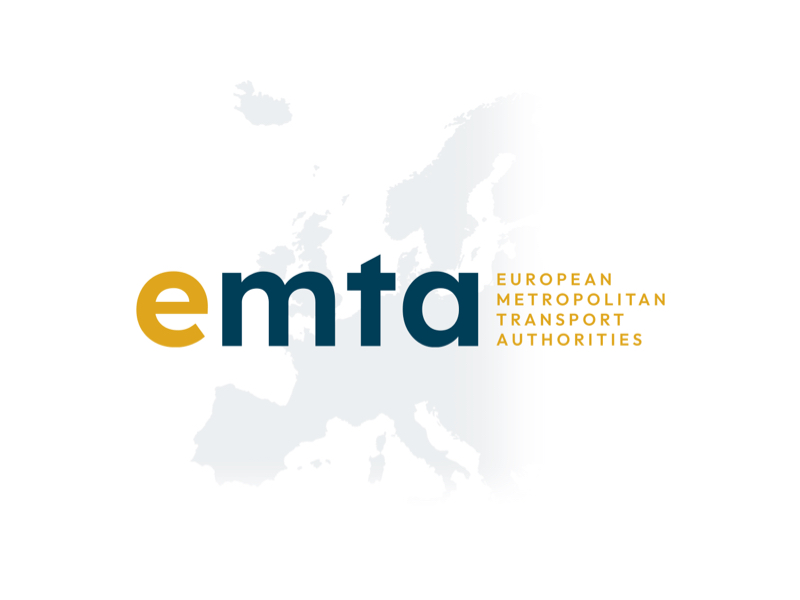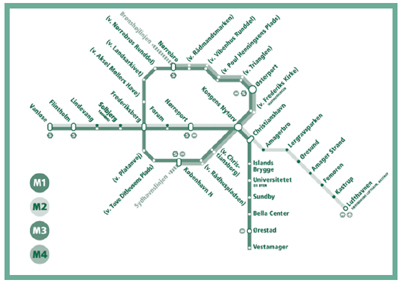Copenhagen
Are you a registered member of EMTA? Log-in to access contact details.
Basic information
Name of the public transport authority: Movia Public Transport
Name of the PTA in local language: Trafikselskabet Movia
Other public transport trademarks: Metro in Copenhagen, DSB (the Danish rail company responsible for the intercity trains, regional trains and S trains), DOT (cooperation between Movia, Metro and DSB), Rejsekort (national ticketing system), Rejseplan (national planning information, and Flextrafik (DRT solutions served by Movia and other PTAs throughout Denmark)
Geographical area: Movia is owned by and operates in 45 municipalities and two regions in Zealand, Denmark.
Inhabitants in the PTA area: 2.7 million
Responsibilities
Ticketing:
Movia is obliged through the transport companies act in Denmark to provide joint ticketing systems with the other PTAs in Zealand (Rejsekort, the ticket app Rejsebillet and DOT). Tariffs and products are also a joint responsibility between Movia, Metro and DSB (the three DOT partners).
Furthermore, Movia also manages the Flextraffic brand, where tariffs and ticketing are set by Movia.
Procurement:
Movia manages bus operations, local train services, and demand-responsive services (Flextraffic). Based on the needs of the municipalities and regions, Movia handles the procurement of bus operations and demand-responsive services.
Procurement for public bus services is conducted through negotiated tenders in accordance with EU Directive 2014/25/EU of February 26, 2014. The harbour buses are procured through competitive dialogue in accordance with EU Directive 2014/25/EU of February 26, 2014. Procurement for local trains is executed through direct award without prior publication in accordance with EU Regulation 1370/2007 of October 23, 2007, article 5, paragraph 2. Demand-responsive services and municipal bus services are procured through public tendering in accordance with EU Directive 2014/25/EU of February 26, 2014.
Rolling stock and depot ownership:
The operators own the rolling stock and depots.
Public transport planning:
The service level and the actual routes are ordered by the owners of Movia (45 municipalities and 2 regions). Movia consults with each owner within the framework of the political decisions on service level and economy. In these consultations, Movia also takes into account how the system is used today, including the origins and destinations of the passengers and possible needs that are not covered within the existing system.
Movia plans the detailed timetables and is responsible for the connections to other transport modes (regional trains, urban trains and Metro).
Development of mobility policy / Transport system planning:
Through the Danish Transport Companies Act, Movia is responsible for the preparation of a traffic/mobility plan every 4 years. The plan determines the framework for the development of the public transport services Movia provides. The plan is prepared with the involvement of Movias owners, the 45 municipalities and two regions in the Movia area.
Marketing of public transport:
Movia is obliged through the transport companies act in Denmark to provide joint marketing in relation to ticket sales through Din Offentlige Transport (DOT) in collaboration with DSB and Metroselskabet. Movia makes image-related campaigns on buses and social media.
Passenger information:
Movia is obliged through the transport companies act in Denmark to provide joint passenger information in the Zealand area through Din Offentlige Transport (DOT) in collaboration with DSB and Metroselskabet.
Organisational model
Inter-municipal co-operation
Movia is owned by the 45 municipalities and two regions in Zealand, Denmark. Movia is a public company, regulated by the Danish Transport Companies Act. Movia is responsible for buses, local trains and DRT solutions (Flextrafik) in the areas of healthcare, schools and persons with disabilities. The municipalities and regions place orders for the local routes and flex traffic, and Movia is responsible for the planning, tendering and coordination of public transport across Zealand. The highest decision-making body of Movia is the board, consisting of nine members. These nine members are appointed by the representatives chosen from each of the municipalities and regions.
Transport service contracting
Procured by the PTA: urban buses, regional buses within the PTA, regional trains (Lokaltog), demand-responsive transport (Flextrafik), municipal buses, harbour buses
Not procured by the PTA, but most/all services accept PTA tickets: commuter and regional trains (DSB trains), metro (procured by the Copenhagen Metro, not Movia)
Current developments
As of 2024:
- Two BRT lines, an upgrading of existing bus lines 200S and 400S, running around Copenhagen connecting the radial S-train lines, expected completion 2030-2032 at the earliest
- Metro expansion to Copenhagen South Station, adding 5 new metro stations to M4 line connecting to the city ring (M3) and Nordhavn (Northern part of the harbour), opening in the summer of 2024.
- Copenhagen Light Rail is under construction in the suburbs surrounding Copenhagen. The light rail is planned to open in 2025.
- The national railway system is under a larger upgrade. The upgrade concerns signals, rails, etc.
- Movia and the municipalities and regions are in the process of converting all buses to emissions-free drive trains. In 2030 approximately 94 % of Movia’s 1400 busses will be emission-free.
Developments beyond 10 years:
- The northern part of M4 will also be expanded with two more stations.
- The S-trains are being converted to driverless operations, implementation during the 2030s. In parallel, CTM has been studying the implementation of a new tram system in the city of Palma, together with other involved administrations. If the project is launched, CTM will tender the construction and operation of the new public transport infrastructure.




